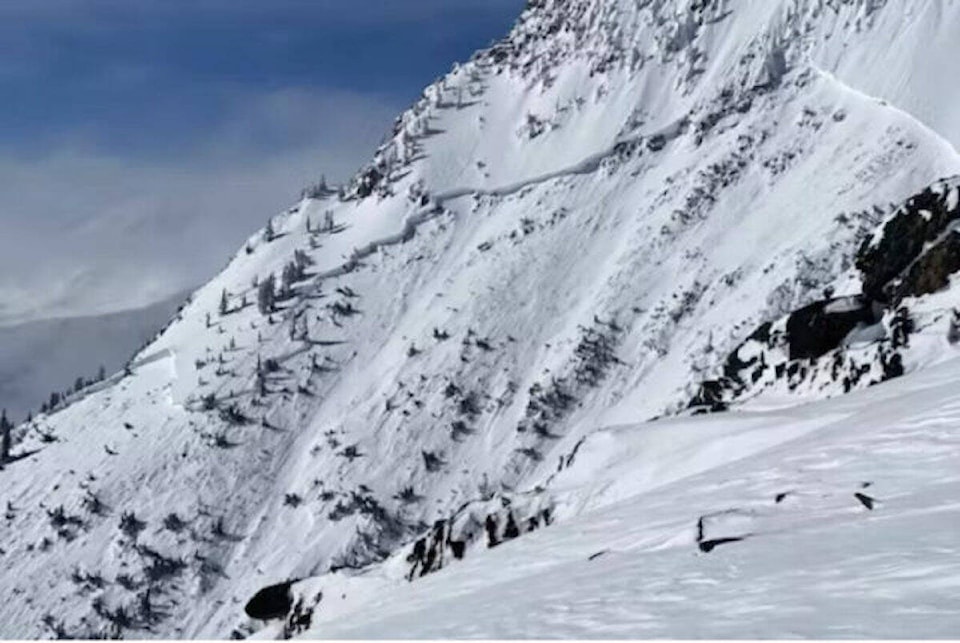This past winter began with a very complicated snowpack forming, leading to extremely dangerous conditions in most of British Columbia’s mountain ranges. Now as a colder-than-normal spring finally starts to see some warming temperatures, those deep warm layers could be a problem again.
“That snowpack structure hasn’t really changed dramatically, many areas still remain weak,” said Simon Horton, forecaster with Avalanche Canada.
READ MORE: ‘Horrifically unforgiving’ risks: A timeline of avalanche deaths in B.C. for the 2022-2023 season
“In a lot of areas we haven’t seen as much avalanche activity while it stayed cold over the last few weeks — months even — but definitely starting later this week and into the weekend we’re going to see our first real big warm up, and that’s going to cause these problems to reemerge.”
Avalanche Canada reported a fatal size three avalanche in the Lake Louise area on April 22, and the Western Purcells have reported recent human-triggered activity, including a fatal size three on April 15 near Thunderwater Lake.
The winter began cold and dryer than normal and so far this spring has been colder than normal. Snow depth was just slightly less than normal, but due to the way the weather patterns have progressed, the really weak snowpack structure that was set up at the beginning of the season has persisted throughout.
In any given spring season, the main trigger for increasing avalanche danger is the warming temperatures and further exposure to sun, Horton explained. So this is the time of year to start reducing exposure to avalanche terrain, avoiding steep slopes as they’re heating up.
“This problem that we have this season complicates that and makes it even more likely for large avalanches to occur during that and the real key is to just not go into steeper, high-consequence avalanche terrain especially when it’s warming up,” Horton said.
All mountain areas will see increasing danger as it warms up to above-freezing temperatures, but Horton said that as you move north from Kimberley towards Invermere and Golden, Avalanche Canada has seen more issues with deep weak layers in those further north mountains that have stayed colder over the course of the winter.
Those regions with weak layers have the potential for even bigger avalanches.
The main message from Avalanche Canada is to pay attention to warming as you’re heading out. The organization is winding down for the year, with the last official forecast to be issued Tuesday, Apr. 25.
Some blogs will likely be released as they learn more about this upcoming warm weather, but backcountry users should be prepared to do a little more work to analyze the weather and conditions. Also be sure to check the Mountain Information Network for recent reports.
paul.rodgers@kimberleybulletin
Like us on Facebook and follow us on Twitter



